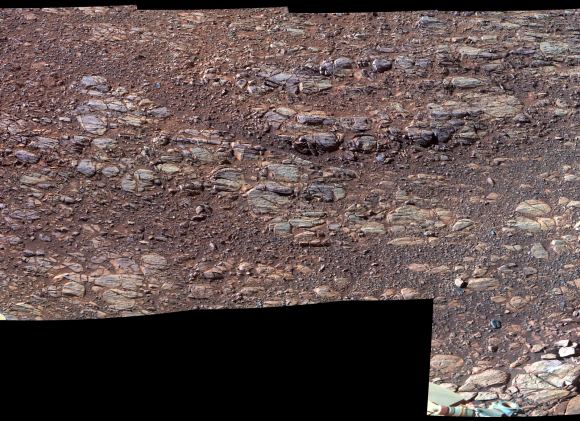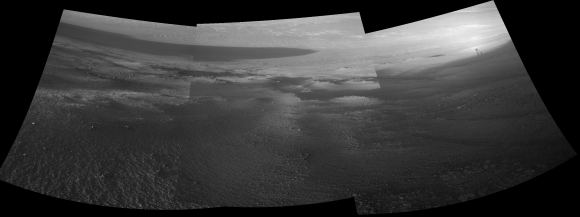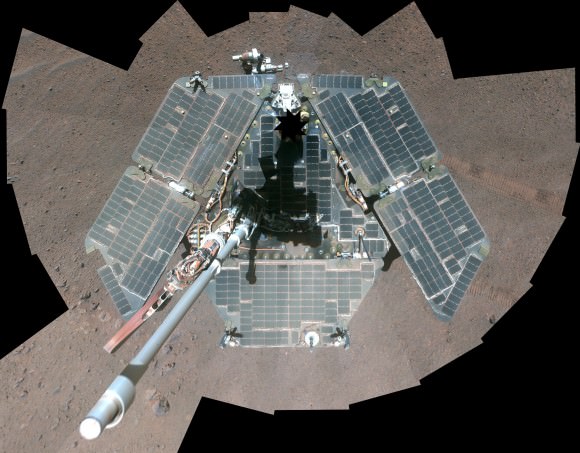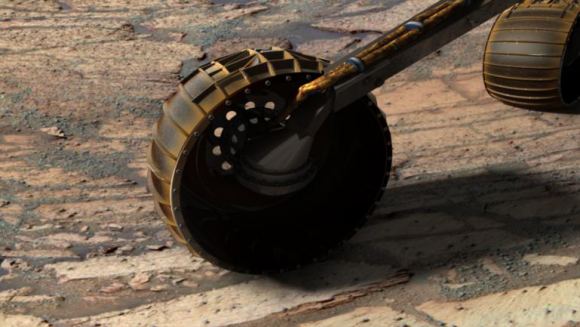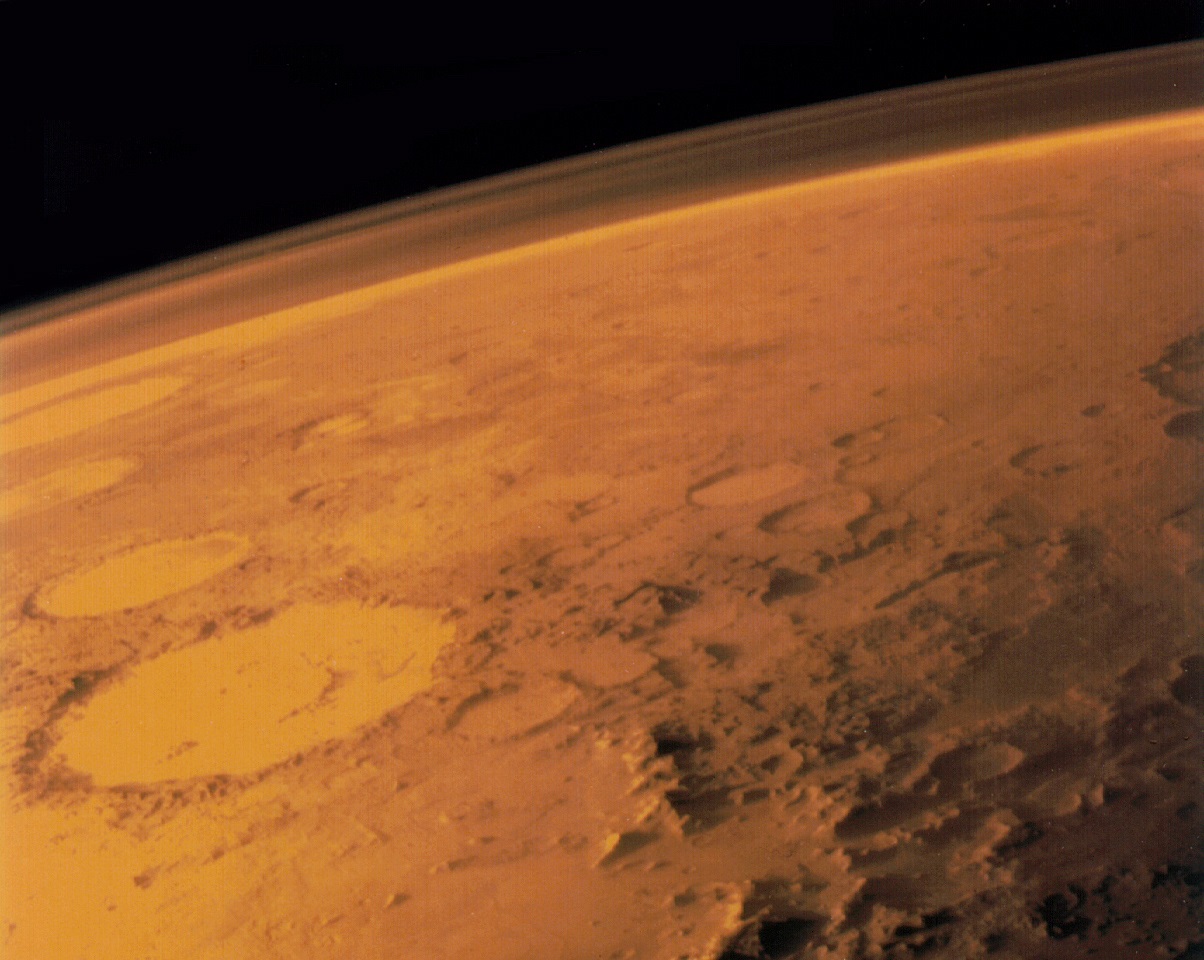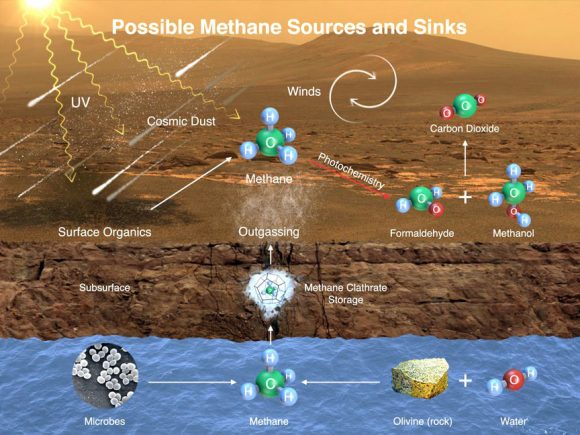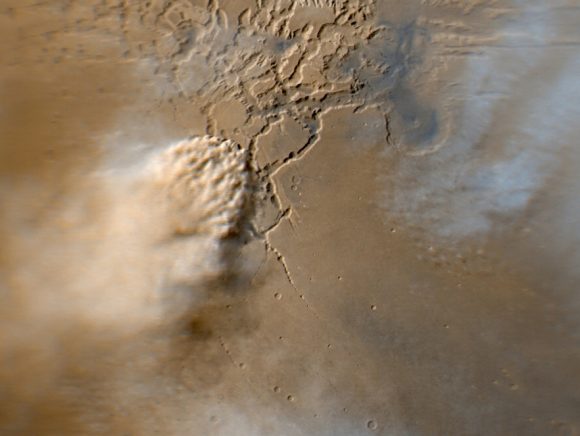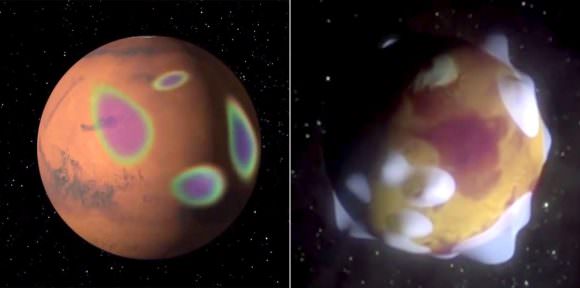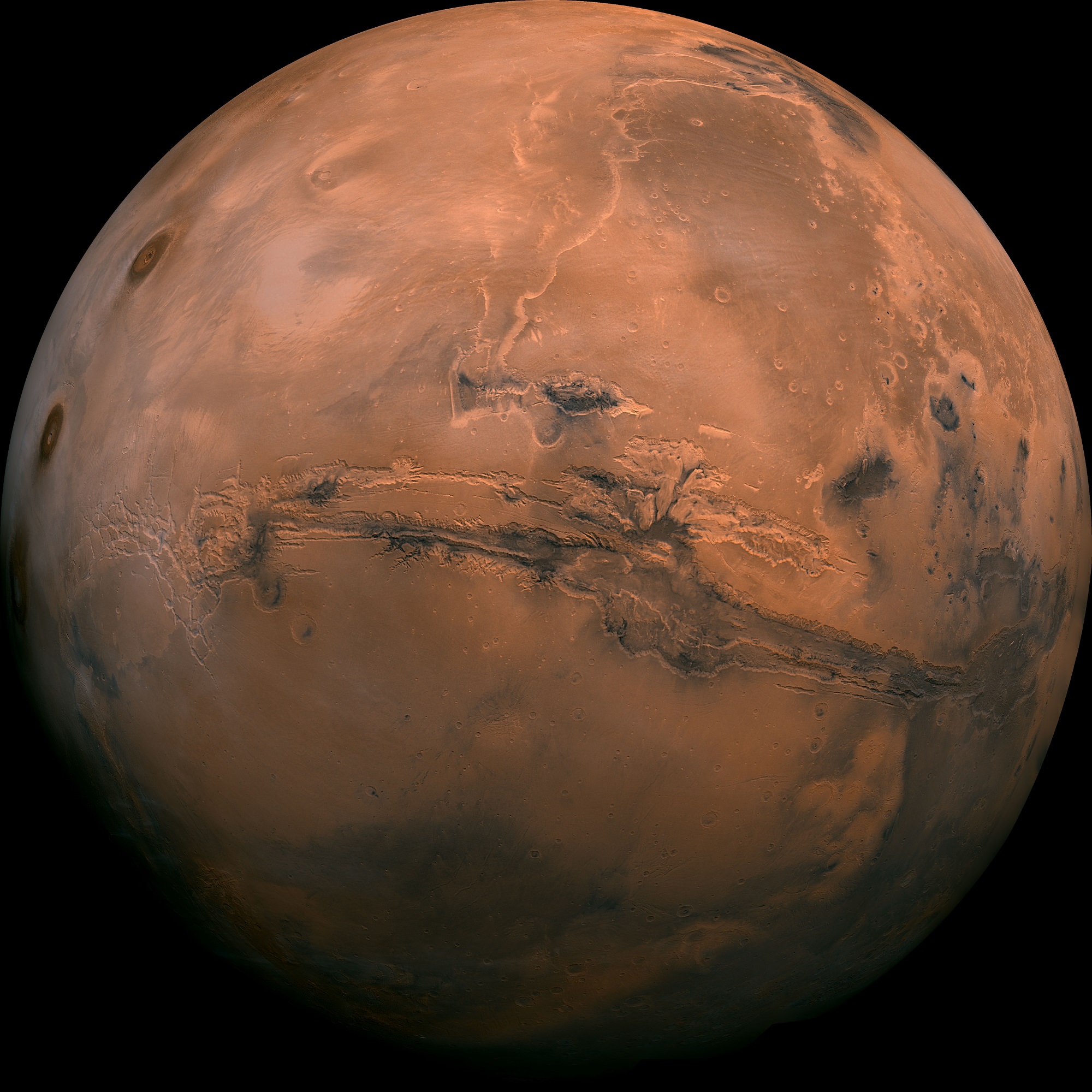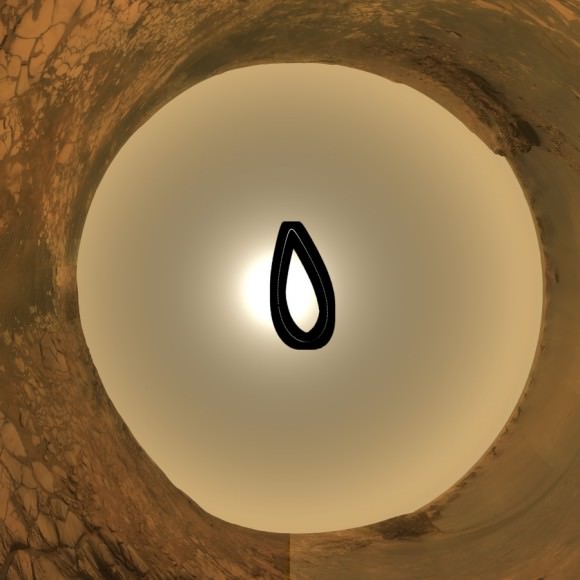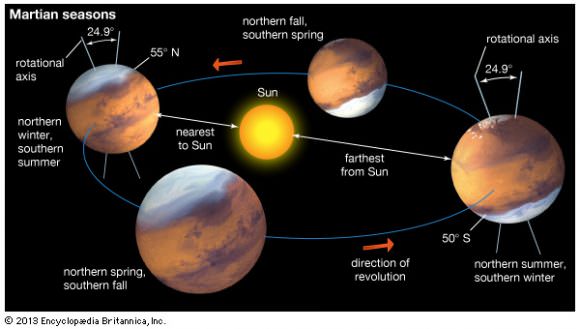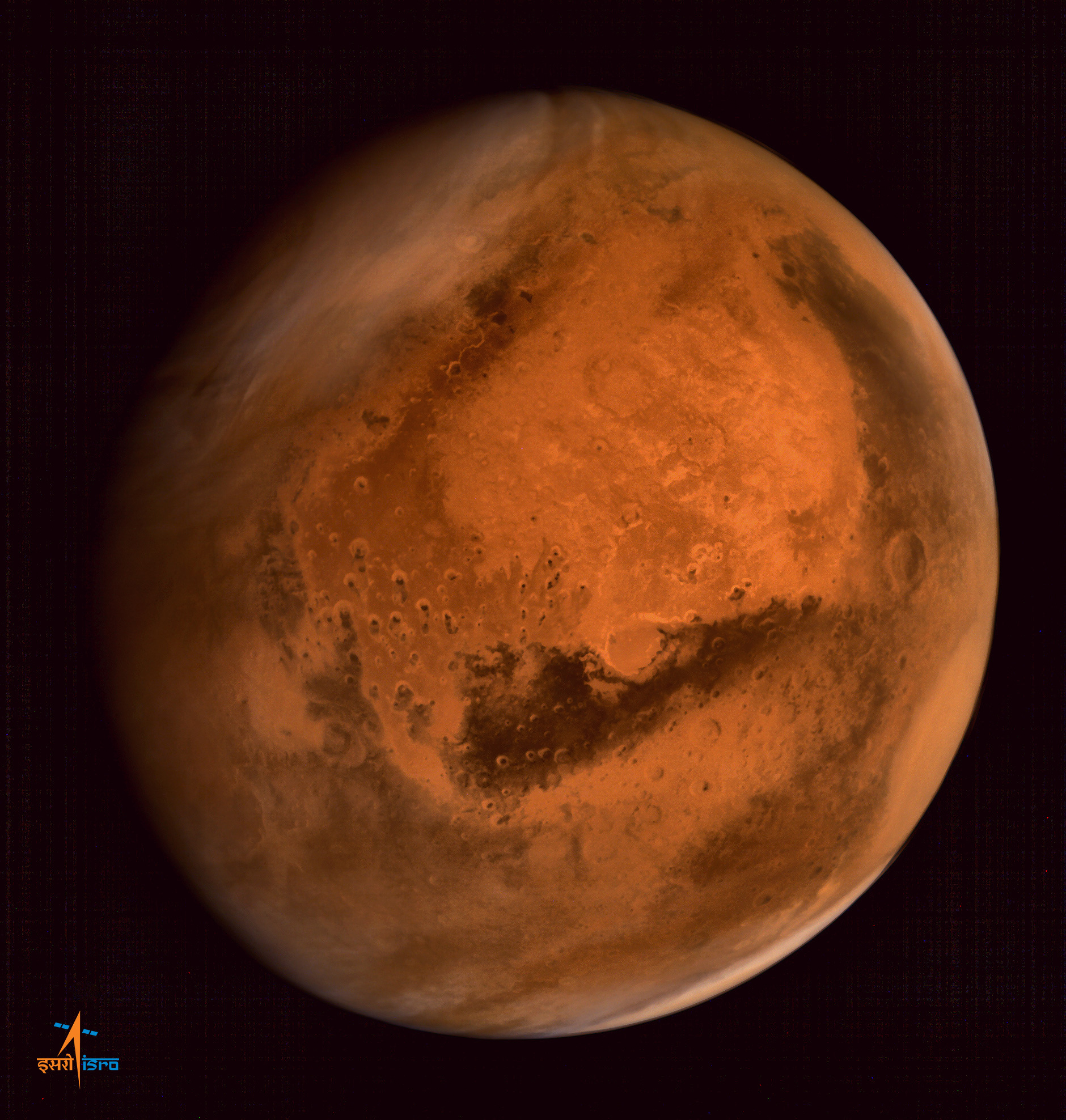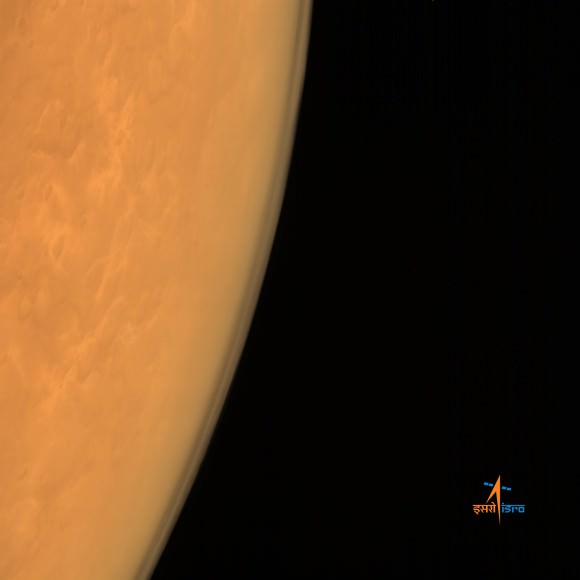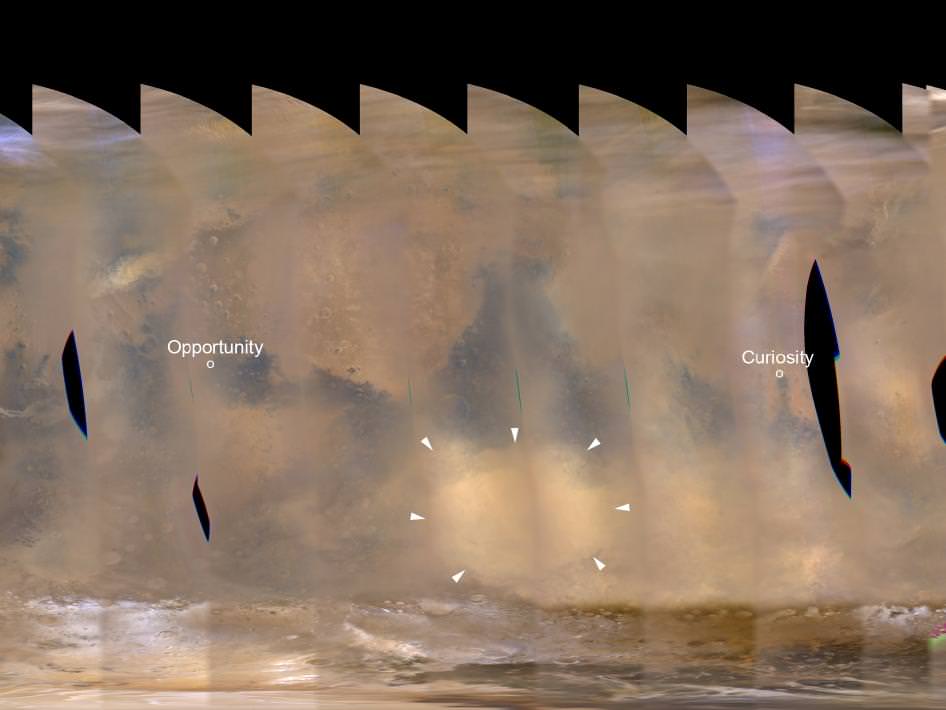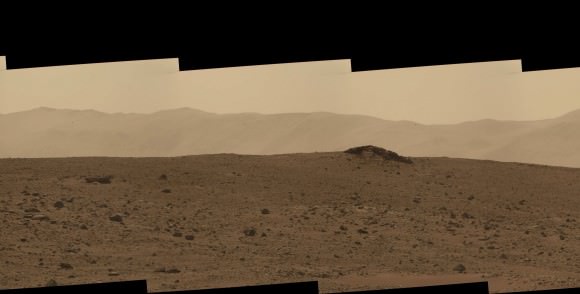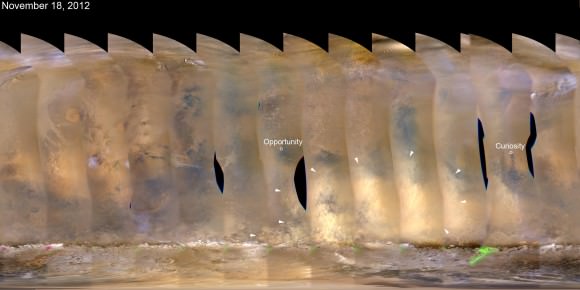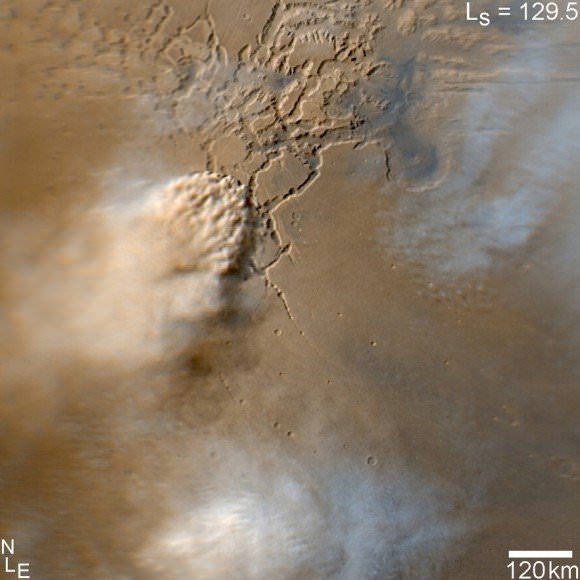NASA’s Opportunity mission can rightly be called the rover that just won’t quit. Originally, this robotic rover was only meant to operate on Mars for 90 Martian days (or sols), which works out to a little over 90 Earth days. However, since it made its landing on January 25th, 2004, it has remained in operation for 14 years, 4 months, and 18 days – exceeding its operating plan by a factor of 50!
However, a few weeks ago, NASA received disturbing news that potentially posed a threat to the “little rover that could”. A Martian storm, which has since grown to occupy an area larger than North America – 18 million km² (7 million mi²) – was blowing in over rover’s position in the Perseverance Valley. Luckily, NASA has since made contact with the rover, which is encouraging sign.
NASA’s Mars Reconnaissance Orbiter first detected the storm on Friday, June 1st, and immediately notified the Opportunity team to begin preparing contingency plans. The storm quickly grew over the next few days and resulted in dust clouds that raised the atmosphere’s opacity, which blocked out most of the sunlight from reaching the surface. This is bad news for the rover since it relies on solar panels for power and to recharge its batteries.
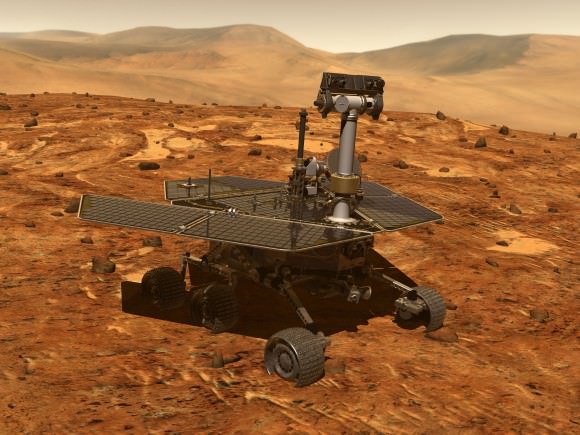
By Wednesday, June 6th, Opportunity’s power levels had dropped significantly and the rover was required to shift to minimal operations. But beyond merely limiting the rover’s operations, a prolonged dust storm also means that the rover might not be able to keep its energy-intensive survival heaters running – which protect its batteries from the extreme cold of Mars’ atmosphere.
The Martian cold is believed to be what resulted in the loss of the Spirit rover in 2010, Opportunity’s counterpart in the Mars Exploration Rover mission. Much like Opportunity, Spirit‘s mission as only meant to last for 90 days, but the rover managed to remain in operation for 2269 days (2208 sols) from start to finish. It’s also important to note that Opportunity has dealt with long-term storms before and emerged unscathed.
Back in 2007, a much larger storm covered the planet, which led to two weeks of minimal operations and no communications. However, the current storm has intensified as of Sunday morning (June 10th), creating a perpetual state of night over the rover’s location in Perseverance Valley and leading to a level of atmospheric opacity that is much worse than the 2007 storm.
Whereas the previous storm had an opacity level (tau) of about 5.5, this new storm has an estimated tau of 10.8. Luckily, NASA engineers received a transmission from the rover on Sunday, which was a positive indication since it proved that the rover still has enough battery charge to communicate with controllers at NASA’s Jet Propulsion Laboratory. This latest transmission also showed that the rover’s temperature had reached about -29 °C (-20 °F).
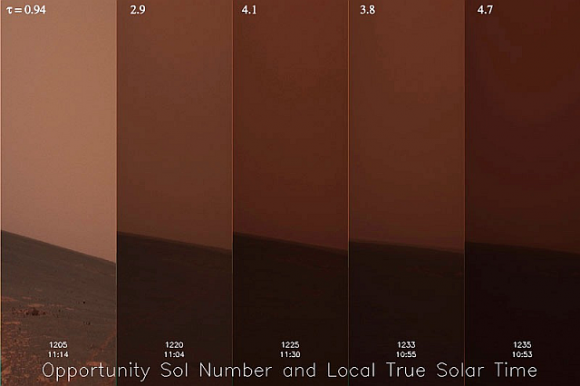
Full dust storms like this and the one that took place in 2007 are rare, but not surprising. They occur during summer in the southern hemisphere, when sunlight warms dust particles and lifts them higher into the atmosphere, creating more wind. That wind kicks up yet more dust, creating a feedback loop that NASA scientists are still trying to understand. While they can begin suddenly, they tend to last on the order of weeks or even months.
A saving grace about these storms is that they limit the extreme temperature swings, and the dust they kick up can also absorb solar radiation, thus raising ambient temperatures around Opportunity. In the coming weeks, engineers at the JPL will continue to monitor the rover’s power levels and ensure that it maintains the proper balance to keep its batteries in working order.
In the meantime, Opportunity’s science operations remain suspended and the Opportunity team has requested additional communications coverage from NASA’s Deep Space Network – the global system of antennas that communicates with all of the agency’s deep space missions. And if there’s one thing Opportunity has proven, it is that it’s capable of enduring!
Fingers crossed the storm subsides as soon as possible and the little rover that could once again emerges unscathed. At this rate, it could have many more years of life left in it!
Further News: NASA



